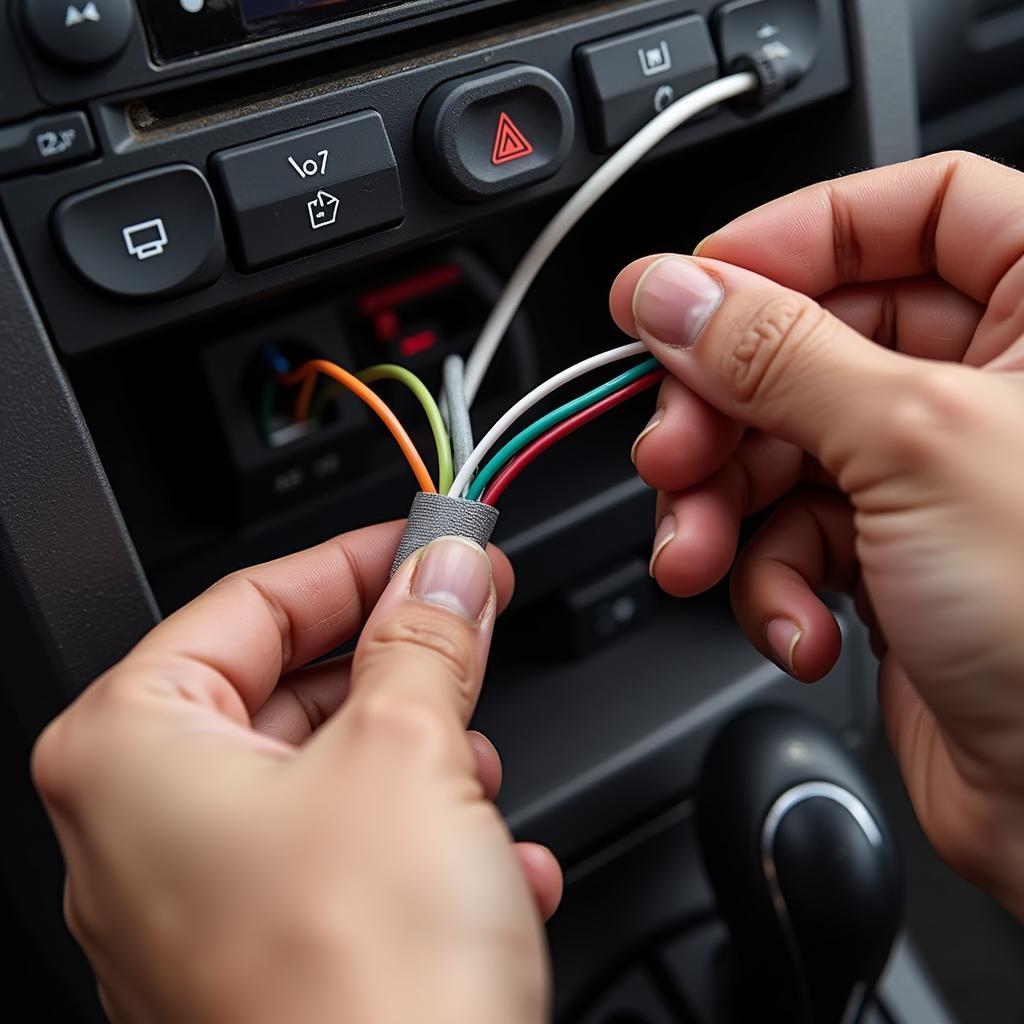Your car has power, the lights come on, the radio works, but the engine refuses to turn over. This frustrating scenario, often described as “car has electric but won’t start,” is a common issue that can stem from a variety of problems. Understanding the potential causes and solutions can save you time and money, and potentially get you back on the road quickly.
After the initial panic subsides, it’s time to systematically investigate why your car has electric power but won’t start. This could be anything from a simple dead battery to a more complex issue within the starter system. Let’s explore some common culprits and how to address them.
Common Reasons Your Car Has Electric Power But Won’t Start
One of the most common reasons for this problem is a weak or dead battery. While your car may have enough power to operate accessories, it might not have the necessary juice to crank the starter motor. Another possibility is a faulty starter motor itself. The starter is responsible for turning the engine over to begin the combustion process. If it’s malfunctioning, the engine won’t start.
Beyond the battery and starter, several other issues can prevent your car from starting, even with electrical power. These include a faulty ignition switch, a bad alternator, or problems with the fuel system. Identifying the specific problem requires a methodical approach. Similar to clicking noise and car won t start, this issue can be related to the battery.
Is it the Battery, Starter, or Something Else?
Checking the battery is the first step. Signs of a bad car battery voltage include dim headlights, slow cranking, or a clicking sound when you turn the key. If the battery appears weak, try jump-starting the car. If the car starts, it likely confirms a battery issue. However, if jump-starting doesn’t work, the problem lies elsewhere. Just like a battery tender dead battery, a simple jumpstart can resolve the problem.
The next suspect is the starter. A clicking sound when turning the key often indicates a faulty starter solenoid, a component within the starter motor. A test involving a multimeter can determine if the starter is receiving sufficient voltage.
Checking the Ignition Switch and Alternator
The ignition switch delivers power to various car systems when you turn the key. A faulty switch might prevent power from reaching the starter, even if the battery is good. Testing the ignition switch requires a bit more technical knowledge, often involving checking for continuity with a multimeter. This is comparable to signs of a bad car battery voltage, where voltage readings are key to diagnosis.
While the alternator isn’t directly involved in starting the car, a faulty alternator can drain the battery and eventually lead to starting problems. After the car starts (if you manage to get it going), check the battery voltage with the engine running. A properly functioning alternator should maintain a voltage around 14 volts. You might also explore options like a radio with bluetooth car if your current radio is draining the battery unnecessarily.
Fuel System Issues
Though less common, problems with the fuel system can also prevent a car from starting. A clogged fuel filter or a malfunctioning fuel pump can restrict fuel delivery to the engine. Checking the fuel pressure with a pressure gauge can help diagnose these issues. Similar to will a car battery charger charge a dead battery, ensuring the right voltage and current is crucial for car functionality.
Conclusion
When your car has electric but won’t start, methodical troubleshooting is key. Starting with the battery and moving through the starter, ignition switch, alternator, and fuel system, you can narrow down the culprit. While some checks are simple DIY tasks, others might require the expertise of a qualified mechanic. Don’t hesitate to seek professional help when needed, especially for complex electrical or fuel system issues. This will help ensure a safe and effective repair and get you back on the road with confidence. Remember, a properly functioning car starts with understanding its electrical and mechanical systems.


